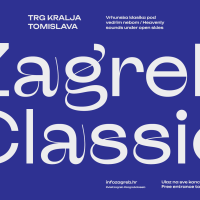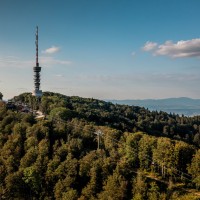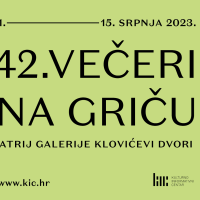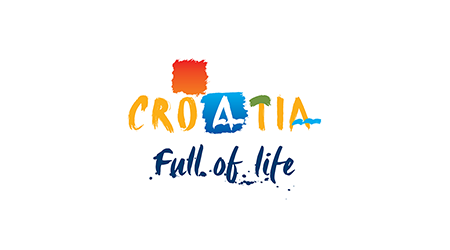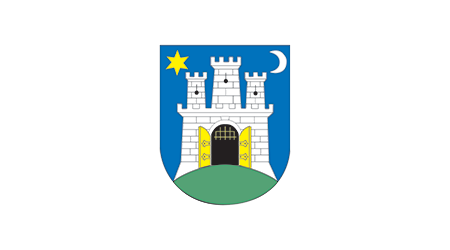An exhibition featuring Zagreb’s old cemeteries
Judging by the great popularity of one of the most beautiful cemeteries in Europe, Zagreb’s Mirogoj, the theme of cemeteries, although admittedly off-putting for some, is actually very attractive. This is proven by the large number of those who have visited the exhibition “Mors porta vitae / Death – the Gate of Life” which can still be seen at the Zagreb City Museum until the end of the month.
 There may be those who think there is nothing appealing about cemeteries. However, a recent experience proves that the absolute opposite is true – the exhibition, “Mors porta vitae / Death – the Gate of Life”, which remains open at the Zagreb City Museum until the end of February, has been seen by an incredible number of people. The full title of the exhibition is “Mors porta vitae / Death – the Gate of Life: Zagreb’s old cemeteries and funerals”. It provides integral insight into the themes of death, the perceptions of death, funerals and cemeteries that have existed in Zagreb throughout history.
There may be those who think there is nothing appealing about cemeteries. However, a recent experience proves that the absolute opposite is true – the exhibition, “Mors porta vitae / Death – the Gate of Life”, which remains open at the Zagreb City Museum until the end of February, has been seen by an incredible number of people. The full title of the exhibition is “Mors porta vitae / Death – the Gate of Life: Zagreb’s old cemeteries and funerals”. It provides integral insight into the themes of death, the perceptions of death, funerals and cemeteries that have existed in Zagreb throughout history.
It is divided into two parts and many related topics. The first part presents traditions, objects and activities surrounding the conditions leading up to death and death itself: drafting of last wills and testaments, administering the last rites and sacraments, composing death notices, preparing hearses, organizing funerals, interments, and ways in which we remember and commemorate the deceased’s life. This segment encompasses many preserved objects, such as original last wills and testaments, death masks, price lists of funeral services from centuries past, the oldest preserved death notices (including the one for the famous Croatian novelist August Šenoa). There are also many photos, drawings, obituaries, condolence letters and epitaphs, even documentaries featuring the burials of famous individuals.
The approximately 900 exhibits include some quite unusual objects, such as a skeleton of a murdered newborn baby (several hundred years old), soldiers’ bones and the like. The exhibition is meant to inform as well as intrigue its visitors, which is why a visit to the exhibition is accompanied by the musical back-drop of a 55-minute long selection of Croatian sacral music spanning the period from the 17th to 20th centuries, as well as the authentic recordings of Zagreb’s funerals from the 70’s of the 20th century.
The second part of the exhibition is dedicated exclusively to the many cemeteries in Zagreb which have been created during the city’s long history, depending on times and circumstances. Visitors will thus get to know those places where people were buried in the past. There is also a part dedicated to the most beautiful cemetery in Zagreb, Mirogoj, one of the most visited highlights of the city. This is actually not surprising as Mirogoj constitutes a veritable open air gallery located in equally attractive natural surroundings.
The cemetery was officially opened in 1876 and became a signature work by the great architect Hermann Bollé. Between 1879 and 1917 he designed several monumental neo-renaissance arcades with twenty domes for the cemetery. The Church of Christ the King was constructed according to his design, whereas the cemetery was adorned with a series of pavilions, a sculpture gallery and manicured opulent vegetation.
Published: 01.02.2012
 Hrvatski
Hrvatski English
English Deutsch
Deutsch Spanish
Spanish French
French Italian
Italian Russian
Russian Korean
Korean Japanese
Japanese Chinese
Chinese There may be those who think there is nothing appealing about cemeteries. However, a recent experience proves that the absolute opposite is true – the exhibition, “Mors porta vitae / Death – the Gate of Life”, which remains open at the Zagreb City Museum until the end of February, has been seen by an incredible number of people. The full title of the exhibition is “Mors porta vitae / Death – the Gate of Life: Zagreb’s old cemeteries and funerals”. It provides integral insight into the themes of death, the perceptions of death, funerals and cemeteries that have existed in Zagreb throughout history.
There may be those who think there is nothing appealing about cemeteries. However, a recent experience proves that the absolute opposite is true – the exhibition, “Mors porta vitae / Death – the Gate of Life”, which remains open at the Zagreb City Museum until the end of February, has been seen by an incredible number of people. The full title of the exhibition is “Mors porta vitae / Death – the Gate of Life: Zagreb’s old cemeteries and funerals”. It provides integral insight into the themes of death, the perceptions of death, funerals and cemeteries that have existed in Zagreb throughout history.